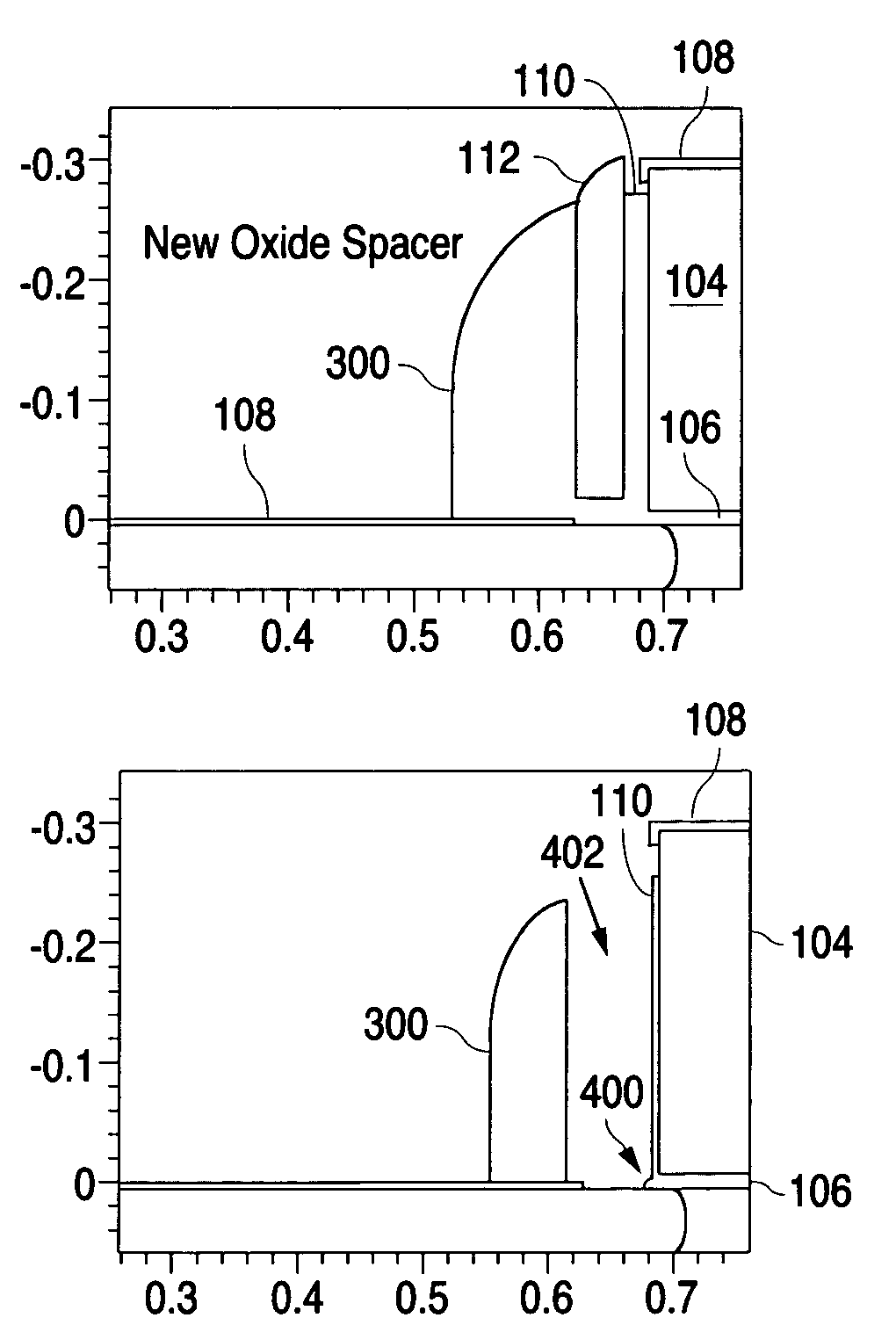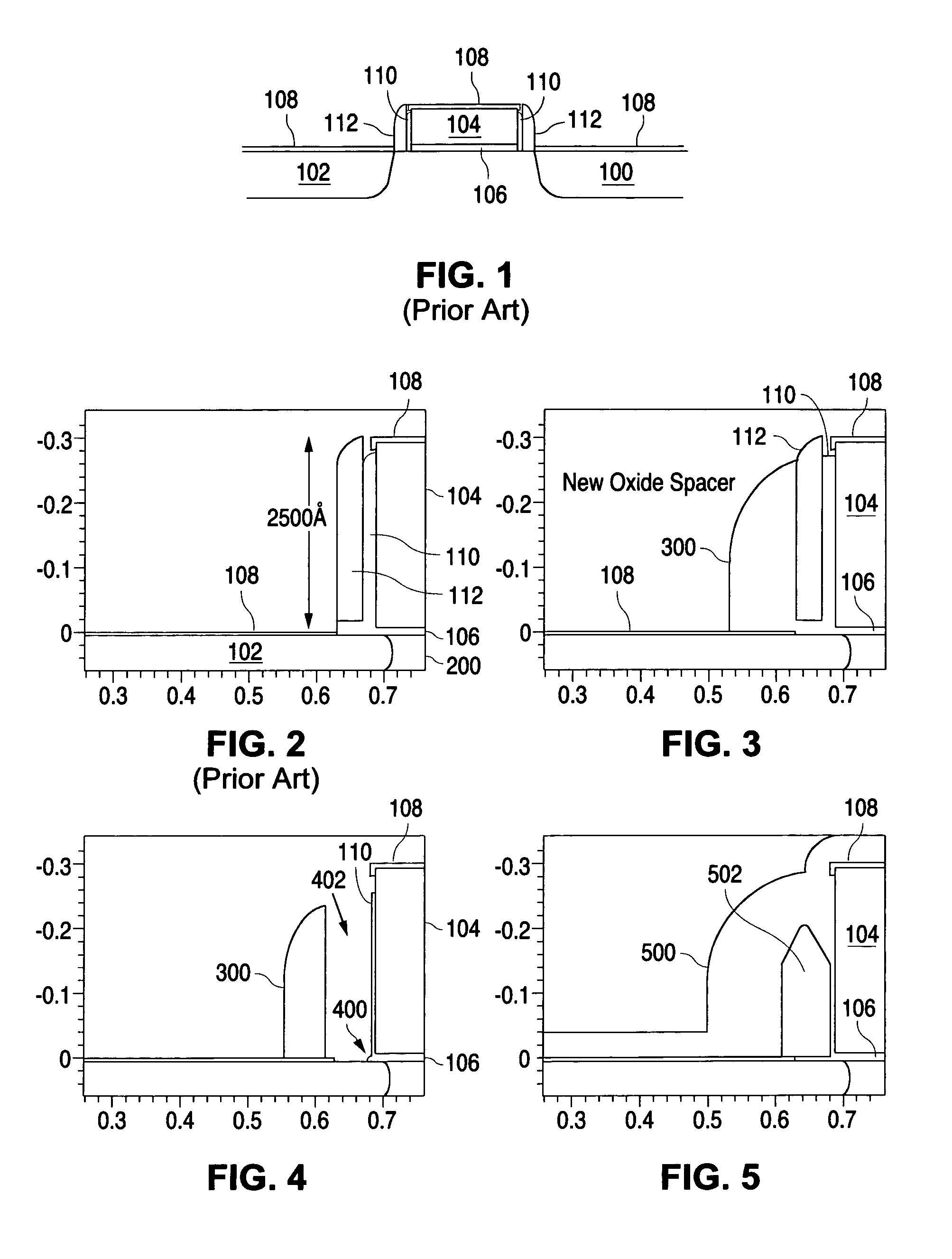Method of reducing fringing capacitance in a MOSFET
a technology of mosfet and fringing capacitance, which is applied in the direction of basic electric elements, semiconductor devices, electrical apparatus, etc., to achieve the effect of reducing the fringing capacitance of mosfet devices and reducing oxide thickness
- Summary
- Abstract
- Description
- Claims
- Application Information
AI Technical Summary
Benefits of technology
Problems solved by technology
Method used
Image
Examples
Embodiment Construction
[0007]FIG. 2 shows an enlarged view of the left hand side of a typical MOSFET as known in the art just after silicidation in which a silicide layer 108 is formed on all silicon regions, including the polysilicon gate 104 and the source 102 (the drain 100 is not shown in FIG. 2). A typical MOSFET at this stage of the process includes a gate oxide layer 106 between the polysilicon gate 104 and the substrate 200.
[0008]As discussed above, typical MOSFET at this stage of the process includes a gate oxide layer 106 between the gate poly of gate 104 and the substrate 200. It also includes a spacer on both sides of the gate 104 (only the left hand spacer is shown in FIG. 2). Each spacer includes an oxide liner 110 and a nitride spacer 112.
[0009]According to the invention, an extra oxide layer is deposited at this stage and is then etched back using the silicide layer 108 as an etch stop, thereby defining a new oxide spacer 300 as shown in FIG. 3.
[0010]The nitride spacer 112 is then etched a...
PUM
 Login to View More
Login to View More Abstract
Description
Claims
Application Information
 Login to View More
Login to View More - R&D
- Intellectual Property
- Life Sciences
- Materials
- Tech Scout
- Unparalleled Data Quality
- Higher Quality Content
- 60% Fewer Hallucinations
Browse by: Latest US Patents, China's latest patents, Technical Efficacy Thesaurus, Application Domain, Technology Topic, Popular Technical Reports.
© 2025 PatSnap. All rights reserved.Legal|Privacy policy|Modern Slavery Act Transparency Statement|Sitemap|About US| Contact US: help@patsnap.com


